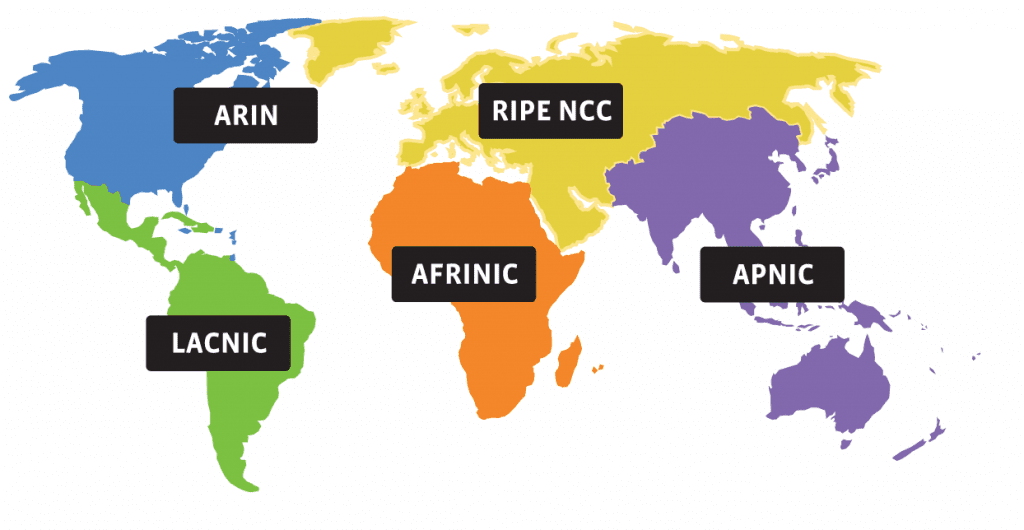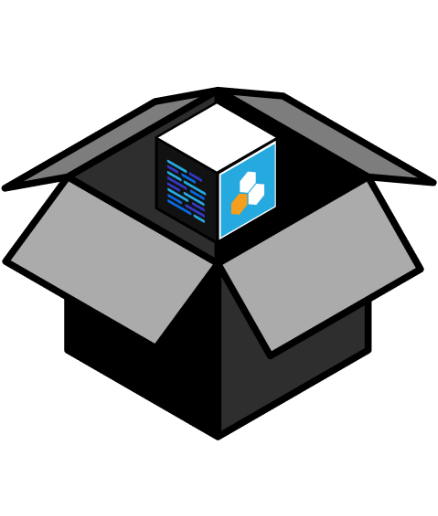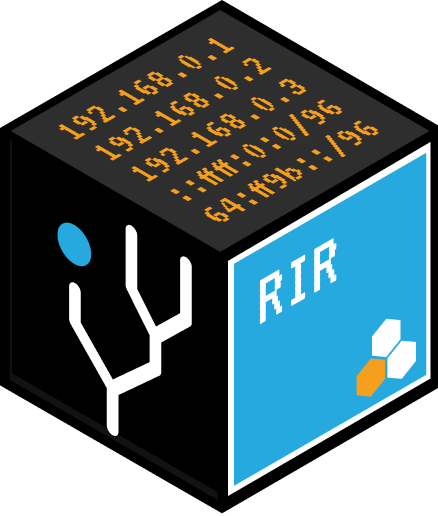
Last Updated: January 15, 2021
It’s not a replacement, it’s a path forward
When we think about IP address “migration” the phrasing is actually a little deceptive. The thing about IPv6 migration is that you’re not necessarily abandoning IPv4, you’re creating a go-forward strategy for your future IP needs. It’s not a replacement, it’s a path forward.
The Internet Assigned Numbers Authority (IANA) is the entity responsible for handing out IP addresses for the Internet. IANA has announced that available IPv4 addresses, the ones we are most familiar with today with four groups of numbers, has come to an end (phew). Within IANA, there are five regions around the world (known as RIRs), each providing IP addresses for devices within that region. IANA distributed the last blocks/groups of IPv4 addresses, one block of /8 addresses, to each region on Feb 3, 2011. This now means that IANA has effectively run out of addresses, and once each region is out, there are no more.
APINC (Asia Pacific region) has already exhausted the new block, and have since allocated measures to make them last as long as possible. It is expected that RIPE (Europe region) will be next, with all others soon to follow. Even if addresses are still available, many regions are choosing to hold onto them rather than allocate them in preparation for IPv6 transition.
IPv6 is the solution to the IP address problem, which cannot be disputed. It is not a new standard, but one that has been largely ignored in recent years due to still having so many IPv4 addresses left. That time is now over. To continue to ignore IPv6 could cause any number of potential problems including the inability to migrate to IPv6 when there is no longer a choice, complete loss of connectivity with the Internet, and no longer being competitive with other organizations whose systems are primed for IPv6 and ready to move to the next generation of Internet addressing and use.
Meet the Dual Stack
Luckily, IPv4 and IPv6 can coexist within a network, and this is very good since the changeover will take years. This means that organizations will have to support both in at least the interim in order to continue complete Internet operations. This technique of supporting both IP versions at the same time is known as dual-stacking. It was developed due to the limitations of the IP versions, particularly with each other. IPv4 and v6 are separate protocols, and cannot speak to each other directly. Thus support for both must be maintained in order to utilize them at the same time during the migration process.
Moving too quickly or only supporting one or the other is almost guaranteed to lose some connectivity or communication until a total world changeover is completed. To assist organizations with this changeover, IP Address Management (IPAM) solutions will be required. These are programs or packaged solutions that find IP addresses on networks, and help administrators with management tasks such as what is in use, available, and how to consolidate. A solution, in this case, is required due to the very large amount of addresses in IPv6 whereas a spreadsheet or other manual process will not be large or fast enough.
How we help
6connect is a pioneer and industry leader in network automation, network planning, and IPv6 management. We help companies large and small to build robust network infrastructures, allowing them to scale confidently. Speak with one of our engineers today to find out how we can help you take your network to the next level.








